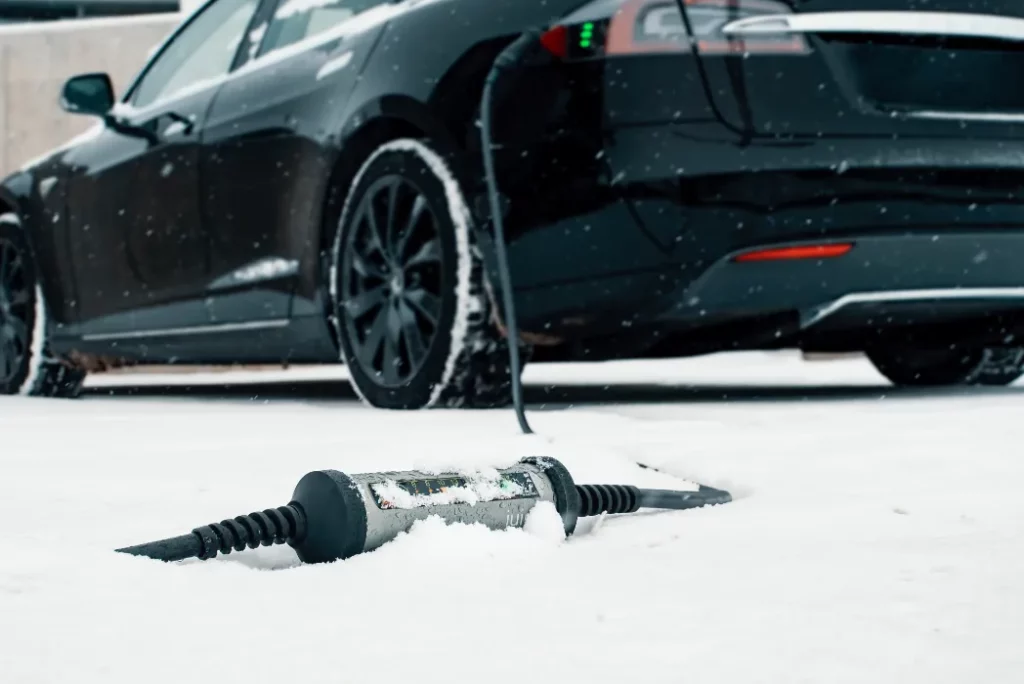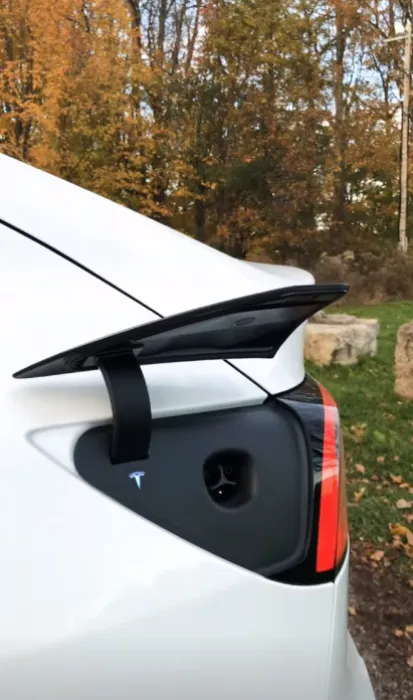Tesla’s electric vehicles have won praise for their efficiency, range, and performance, but they also face a unique problem that many EVs face: the inability to charge in the cold.
Fixing Tesla won’t charge in cold requires pre-conditioning the battery, which you can only do by plugging the car in while it’s still warm and maintaining a higher level of charge.

Why Your Tesla Won’t Charge in Cold and How to Fix It?
There are some serious reasons why your Tesla unlike other EVs won’t charge in cold. To solve the issue, it is better to know the causes behind the issue first. So, let’s get into it:
1. Battery Chemistry:
Tesla like the majority of EVs employs lithium-ion batteries. The problem is that temperature changes can damage these batteries.
The battery’s internal chemical processes that create and store energy are less effective when the temperature is cooler outside. Therefore, the capacity of the battery and performance drop and can’t charge in cold.
This is why preconditioning the battery is a must before trying to power your Tesla while in the cold. You need to warm it up to the right temperature for charging.
To accomplish it, recharge the battery while the car is at the right temperature, especially before it runs dead. The preconditioning process improves internal resistance reduction and speeds recharging.
2. Higher Internal Resistance:
Lithium-ion batteries’ internal resistance rises at low temperatures. A higher resistance battery loses additional power during the charging and draining cycles as heat.
As a result, the battery’s overall efficiency suffers due to this heat dissipation.
Scheduled charging is a function available on Tesla cars that enables you to program a certain routine when you can charge your car. If it’s possible, plan to charge around periods of low activity or when it will be warmer outside.
3. Lower Capacity of the Battery in Cold Weather:
The battery’s usable capacity might get lower as a result of cold weather.
This indicates that the battery might not be able to supply as much energy in quite cold temperatures as it could in more temperate situations. The car’s driving range suffers as a result.
At really low temperatures, it is better not to charge the cold battery, this can be harmful. The battery may not receive a charge effectively and take longer to charge if it is too cold to charge.
And if it becomes mandatory, you can try using a high-power power source as often as possible. Even in cold weather, the charging points can give a faster charge since the greater power can help overcome the loss of efficiency because of the cold temperatures.
Also, you must use the vehicle’s battery to power the cabin heater. Rather than heating the entire cabin, examine employing seat heaters and steering wheel heaters.
Alternatively, consider preheating the interior while the car is still plugged into a charger.
4. Ineffective Regenerative Braking:
Regenerative braking, a standard function in Tesla cars recovers energy during braking and decelerating and stores it in the battery.
Since the battery fails to store energy as well in cold conditions, regenerative braking can become less effective. This results in lower power regeneration.
Low brake fluid temperatures in extremely cold weather may restrict regenerative braking. Consider leaving your Tesla in a warmer location or using a heated garage if you experience this problem frequently.
Make sure your tires are correctly inflated because underinflated tires might impair the effectiveness of regenerative braking.
Read Also: How Often Should I Charge My Tesla To 100%?
5. Problem in Charging Port:
This may sound strange, but very low temperatures might cause the charging port or cable to freeze, which may make it challenging to connect the vehicle for charging.

Make sure that there is no moisture, ice, or snow on the connectors and charging port. Connectors that are dry and clean provide a stronger electrical connection, which enhances the charging process.
You can also utilize the Tesla mobile app or the vehicle’s display to check the battery’s condition. It may be worthwhile calling Tesla’s service department for a battery inspection if you observe any noticeable reduction in capacity or efficiency in charging.
Frequently Asked Questions [FAQs]
Why does my Tesla charge slowly in the cold?
The battery’s efficiency declines in lower temperatures, which can result in a delayed charging process. To prevent harm to the battery and boost effectiveness, the system for battery management limits the charging rate.
Is it possible to charge my Tesla in freezing temperatures?
Yes, it is possible to charge your Tesla in cold temperatures. To facilitate charging, it is necessary to prepare the battery and employ strategies such as connecting it while the battery remains warm.
What is battery preconditioning, and how does it support charging over the winter?
A common Tesla function called battery preconditioning heats the battery before recharging it, increasing the efficiency of the battery. When heading to a Supercharger or location, it can start either manually or automatically.
Can I warm up the battery in my Tesla before charging it using a space heater?
It is not advisable to warm the battery with an external space heater because it may be dangerous and ineffective. Tesla’s integrated battery preconditioning is a more reliable and effective solution.
Are there any Tesla models or battery categories that perform better in cold climates?
Tesla has improved battery technology over time, and newer models frequently perform better in cold climates because of advances in battery control of heat. However, the recommendations regarding charging in cold apply to all Tesla models.
Read Also: The Ultimate Guide to Tesla HV Battery
